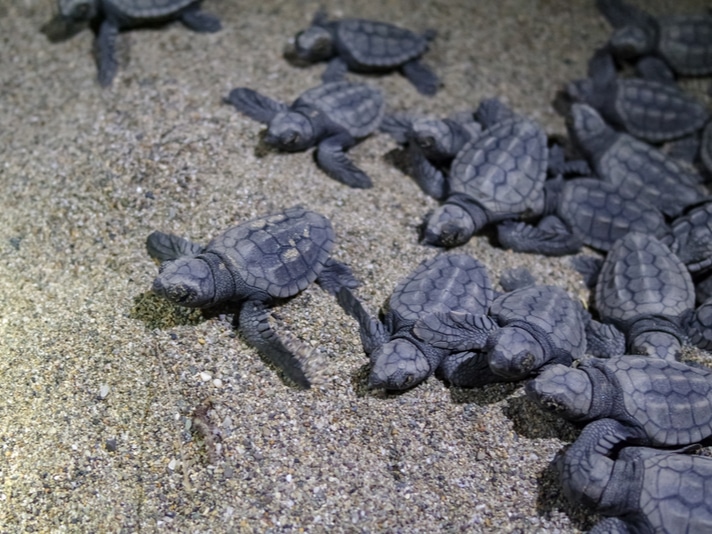The conservancy has documented around 8,200 nests in 40 years and has assisted more than 380,000 sea turtle hatchlings to get to their ocean homes.
The Conservancy of Southwest Florida is celebrating 40 years of sea turtle research, and announced it has documented approximately 8,200 nests during those four decades and has assisted more than 380,000 sea turtle hatchlings to get to their ocean homes. The effort by the conservancy has resulted in the longest running sea turtle monitoring program in the United States, it was revealed on its website July 18.
Warming Planet Causes 99 Percent of Raine Island Sea Turtle Hatchlings To Be Female, Study Says
As Plastic Soaks In The Ocean It Begins To Smell Like Food, And Sea Turtles Ingest It
The conservancy also announced that it has recorded more than 552 nests on Florida’s Keewaydin Island this nesting season.
“We are seeing some of the original hatchlings coming back to nest,” Kathy Worley, the Conservancy’s environmental science director said on the Conservancy’s website. “In addition to monitoring nesting activity, preventing predation by resident wildlife and tagging the turtles to monitor nesting through the years, we conduct cooperative research with agencies and universities to gain insight into the life history of sea turtles to better protect them.”
Program Milestones Over the Years
- The first leatherback nest on Keewaydin and the first recorded in Collier County in 2015.
- From 1994-2018, the Conservancy monitored the Naples City Beach in a partnership with Collier County and documented over 2,000 nests, producing over 116,600 hatchlings.
- For the past 30 years, Conservancy biologists were visited periodically by one mother loggerhead, “Emily.” The team has spotted Emily 13 times since she was first flipper-tagged in 1988, with the latest in 2019.
Some of the collaborative research includes providing tissue samples to various universities for research. Participating universities include the University of Georgia, University of Miami, Florida Atlantic University and the University of Florida. Other research has included a sex ratio study in conjunction with the Rookery Bay National Estuarine Research reserve; a satellite tagging program conducted with the University of Central Florida and expanded to include green sea turtles (Chelonia mydas) from Sanibel Island. The conservancy worked with the Sanibel Captiva Conservation Foundation on the satellite tagging program.

NPS
One the last 40 years, more than 130 interns have been trained, and many of those who went through the internship program at the Conservancy continue to work with sea turtles.
Sea Turtles in Peril
Sea turtles continue to be some of the more imperiled reptiles on the planet. The majority of the issues that are negatively affecting sea turtles are anthropogenic, with some of the more serious issues being marine plastic pollution and a warming climate. A 2013 study by Australian scientists with the University of Queensland and the Scientific and Industrial Research Organization (CSIRO) said that sea turtles are ingesting more plastic than they were 25 years ago.



